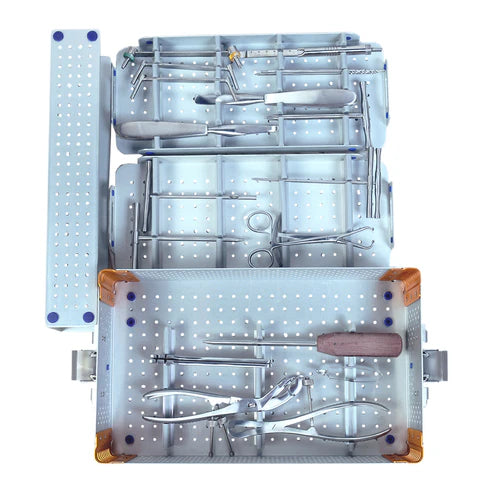In the realm of orthopedic surgery, advancements in small fragment sets have revolutionized the way fractures are treated, ushering in an era of enhanced care and improved patient outcomes. From traditional techniques to cutting-edge innovations, the evolution of these sets has been instrumental in meeting the diverse needs of surgeons and patients alike.
Understanding the Basics
Small fragment sets are essential tools used by orthopedic surgeons to stabilize fractures in bones such as the wrist, hand, foot, and ankle. These sets typically consist of plates, screws, and other fixation devices designed to hold fractured bones in place during the healing process. The primary goal of using small fragment sets is to restore the anatomical alignment of the fractured bone, thereby promoting optimal healing and function.
Traditional Approaches
Historically, orthopedic surgeons relied on standard plates and screws for fracture fixation. While effective, these traditional approaches had limitations, particularly in cases where fractures involved smaller bones or complex anatomical regions. Surgeons often faced challenges in achieving stable fixation without causing additional trauma to surrounding tissues.
The Rise of Specialized Sets
Recognizing the need for more tailored solutions, manufacturers began developing specialized small fragment sets optimized for specific anatomical sites and fracture patterns. These sets feature a variety of plate designs, including low-profile and pre-contoured options, allowing surgeons to choose the most appropriate fixation devices for each individual case.
Innovations Driving Progress
In recent years, advancements in materials and manufacturing techniques have further propelled the evolution of small fragment sets. Titanium and titanium alloy implants offer superior strength and biocompatibility, reducing the risk of implant failure and complications. Additionally, 3D printing technology enables the production of customized implants tailored to the unique anatomy of each patient.
Benefits for Surgeons and Patients
The evolution of orthopedic small fragment sets has brought about numerous benefits for both surgeons and patients. Surgeons can now achieve more precise and stable fixation, reducing the risk of malunion or nonunion and facilitating faster recovery times. Patients experience less postoperative pain and enjoy better long-term outcomes, with restored function and mobility.
The evolution of orthopedic small fragment sets represents a significant milestone in the field of fracture care, offering surgeons an array of advanced tools to effectively manage complex fractures. By embracing innovation and specialisation, orthopedic surgeons can continue to enhance patient care and improve the overall quality of life for individuals suffering from fractures. As technology continues to advance, the future of fracture care looks promising, with even greater possibilities on the horizon.
This blog post has been crafted with a focus on providing valuable information in an engaging and easy-to-understand manner. At PeakSurgicals, we are committed to staying at the forefront of orthopedic innovation, ensuring that surgeons have access to the latest advancements in fracture care.
